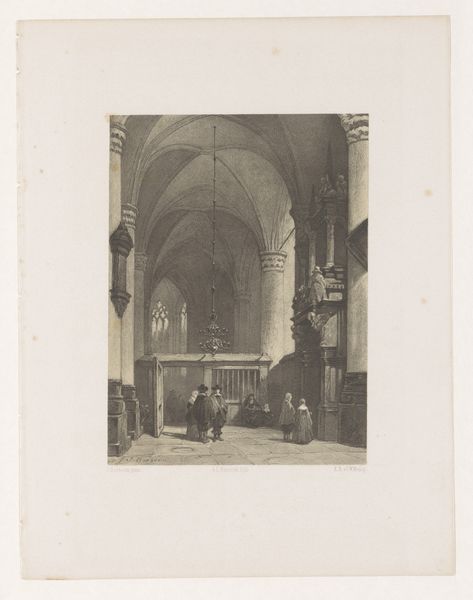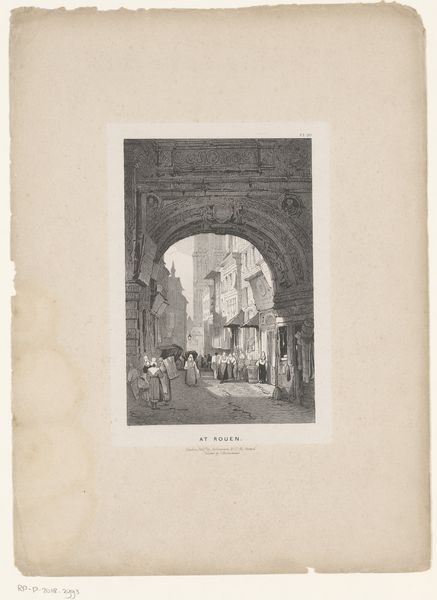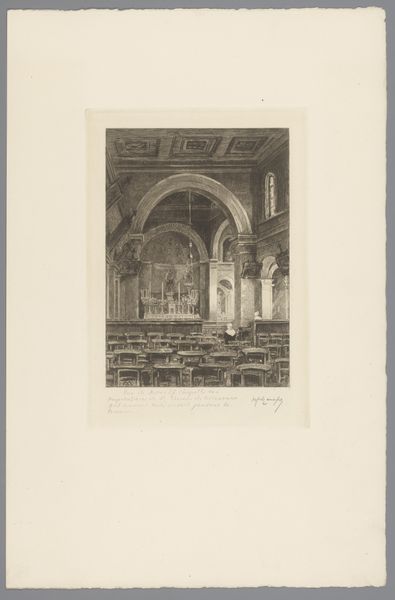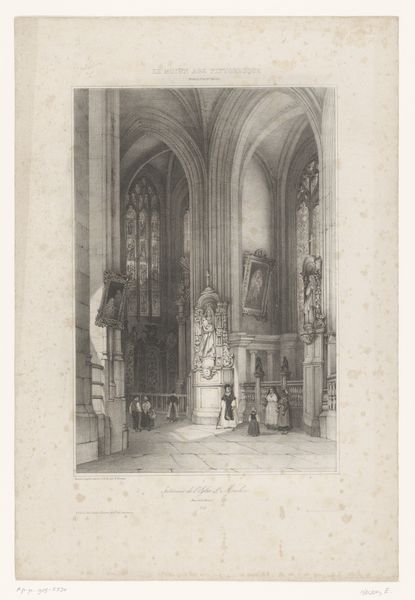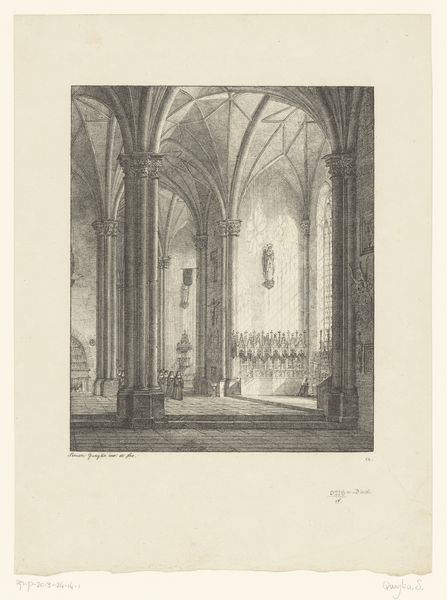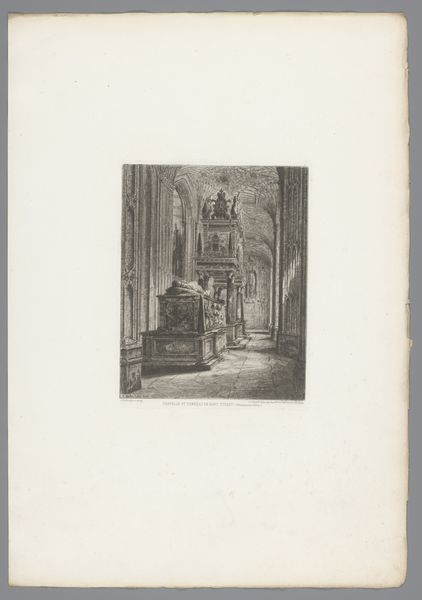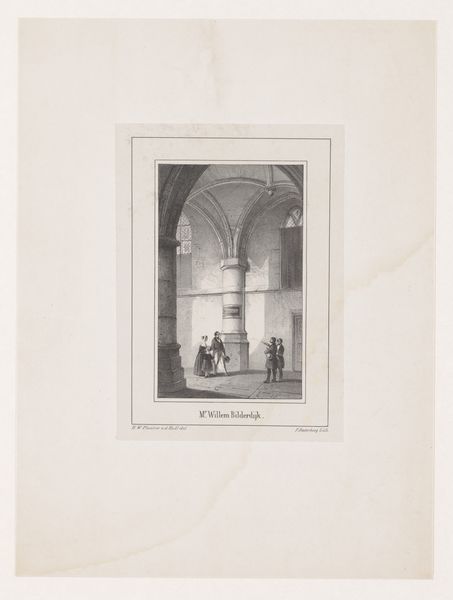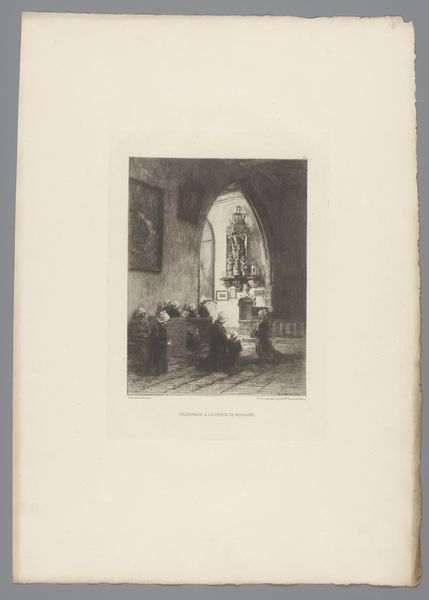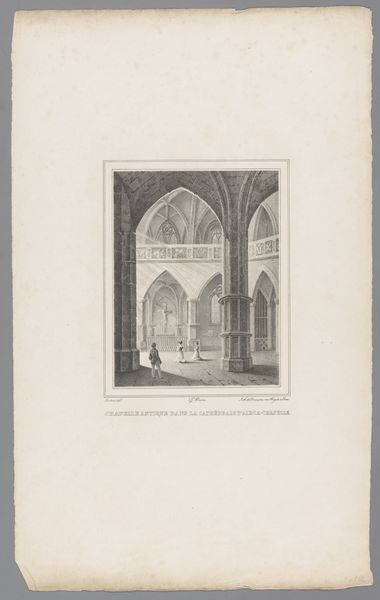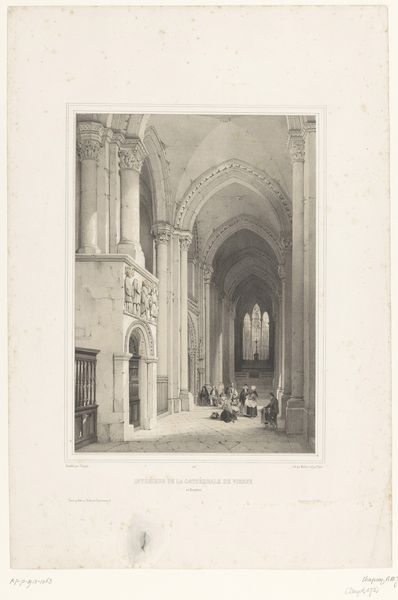
Interieur van de Sint-Sebalduskerk in Neurenberg 1817 - 1882
0:00
0:00
drawing, print, paper, engraving
#
drawing
# print
#
paper
#
form
#
romanticism
#
line
#
cityscape
#
engraving
#
realism
Dimensions: height 335 mm, width 247 mm
Copyright: Rijks Museum: Open Domain
Editor: This is "Interieur van de Sint-Sebalduskerk in Neurenberg," made sometime between 1817 and 1882 by Johann Gabriel Friedrich Poppel. It's an engraving on paper currently held in the Rijksmuseum. It gives such a sense of grand space, but feels almost… staged? What do you see in this piece? Curator: I see a deliberate construction of civic identity through architectural representation. Poppel’s choice to depict the interior of St. Sebaldus Church isn't just about realism; it's a political statement. Churches like this were deeply tied to Nuremberg's history as an Imperial Free City. Consider the post-Napoleonic era: former free cities had to redefine their identities within larger states. Editor: So, by focusing on the church's interior, Poppel is highlighting Nuremberg’s history and its independent spirit? Curator: Precisely. This wasn’t just about architectural accuracy; it’s about preserving the memory of a certain civic autonomy in the face of evolving political structures. Look at the figures included – they seem almost performative, subtly emphasizing the church as a site of ongoing social and historical narrative. The museum acquires the work, and that process reflects a renewed interest in preserving architectural images documenting local identity. What do you think is lost or gained in its relocation to a museum setting? Editor: I guess the original civic context shifts; it becomes more about art historical documentation rather than immediate communal memory. Still, its accessibility increases within a museum. Curator: A poignant observation! And it highlights how institutions shape the reception and understanding of art across time. It’s less about religious worship here and more about collective cultural heritage. Editor: It’s fascinating to consider how an image like this becomes a site for renegotiating identity and memory! Curator: Indeed, it pushes us to consider the ever-evolving relationship between art, history, and civic life.
Comments
No comments
Be the first to comment and join the conversation on the ultimate creative platform.
